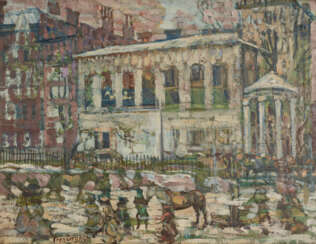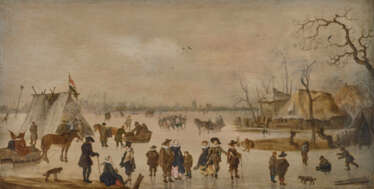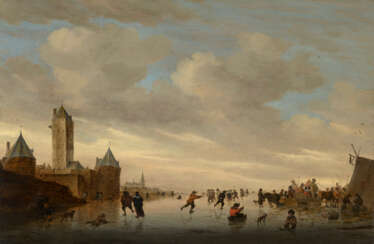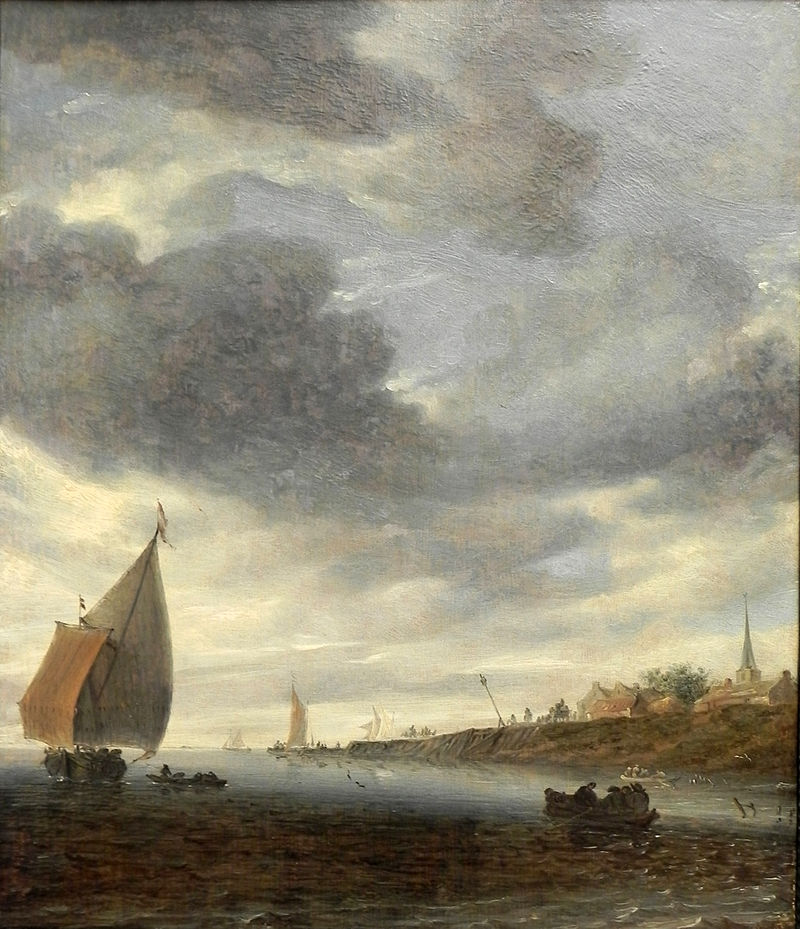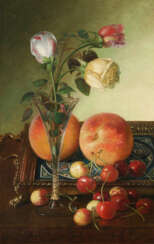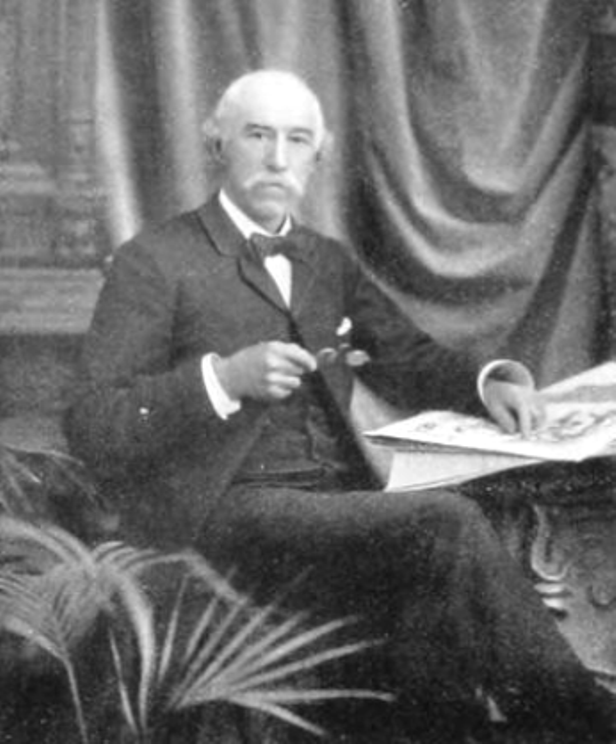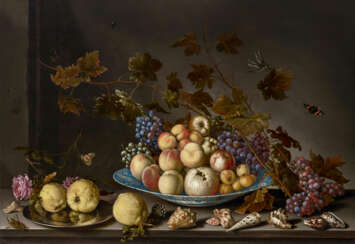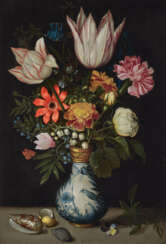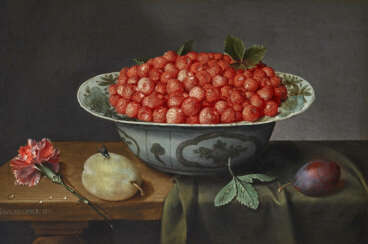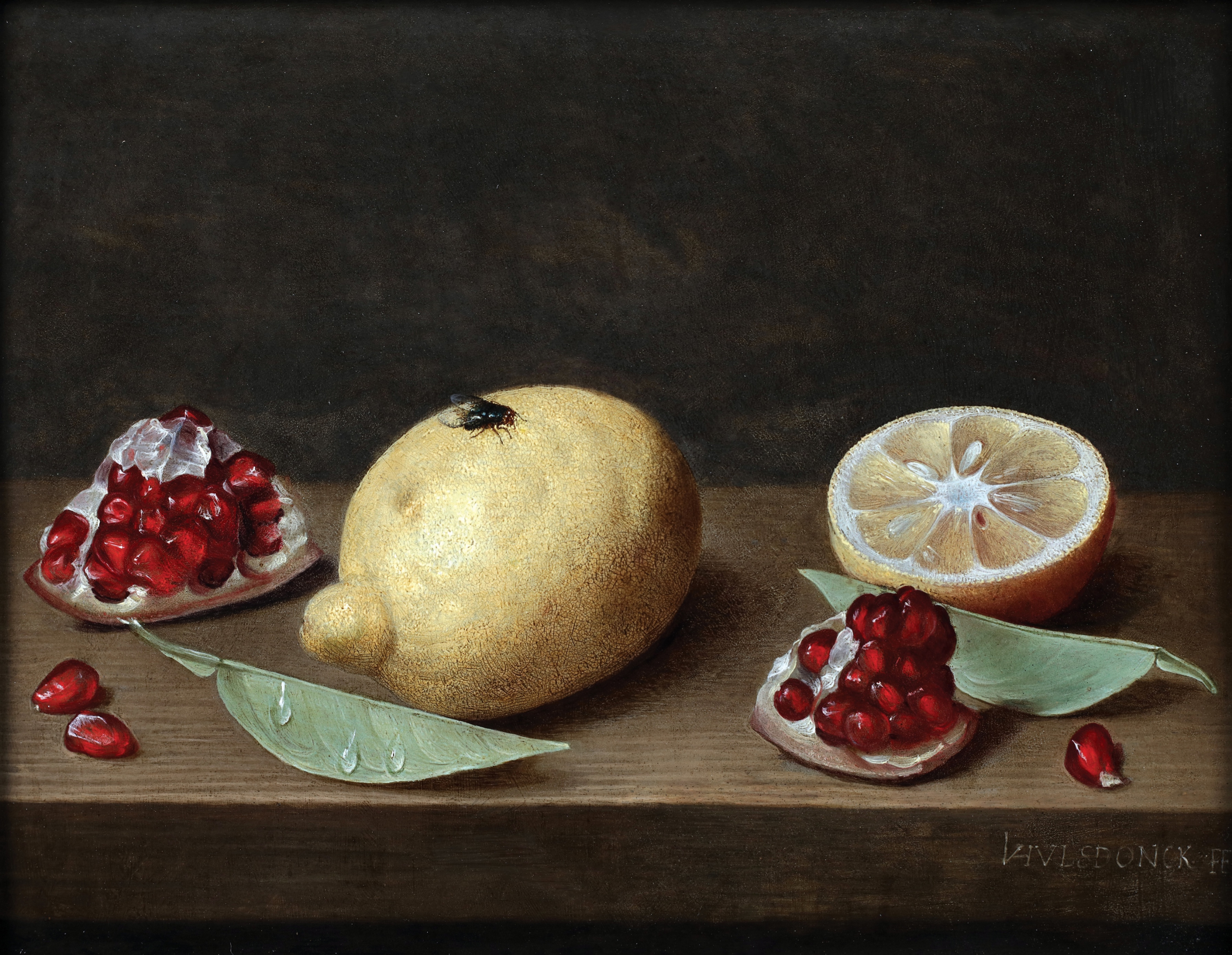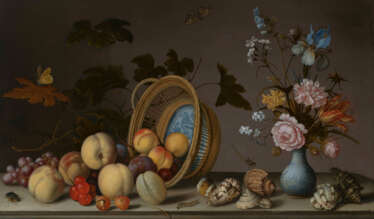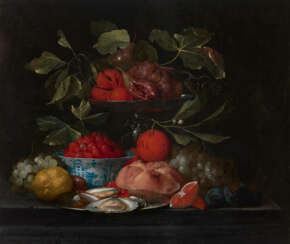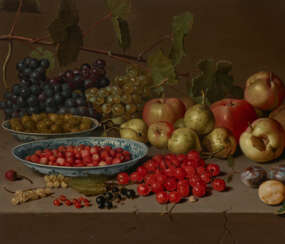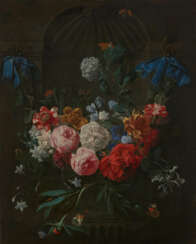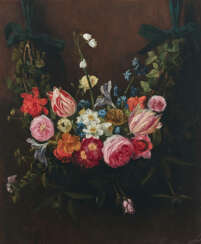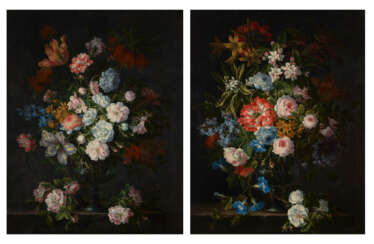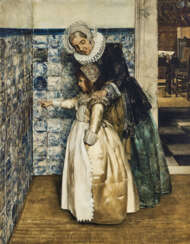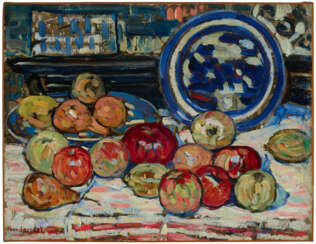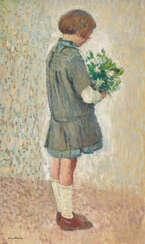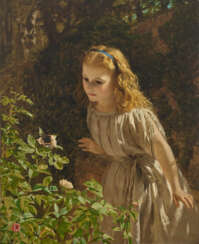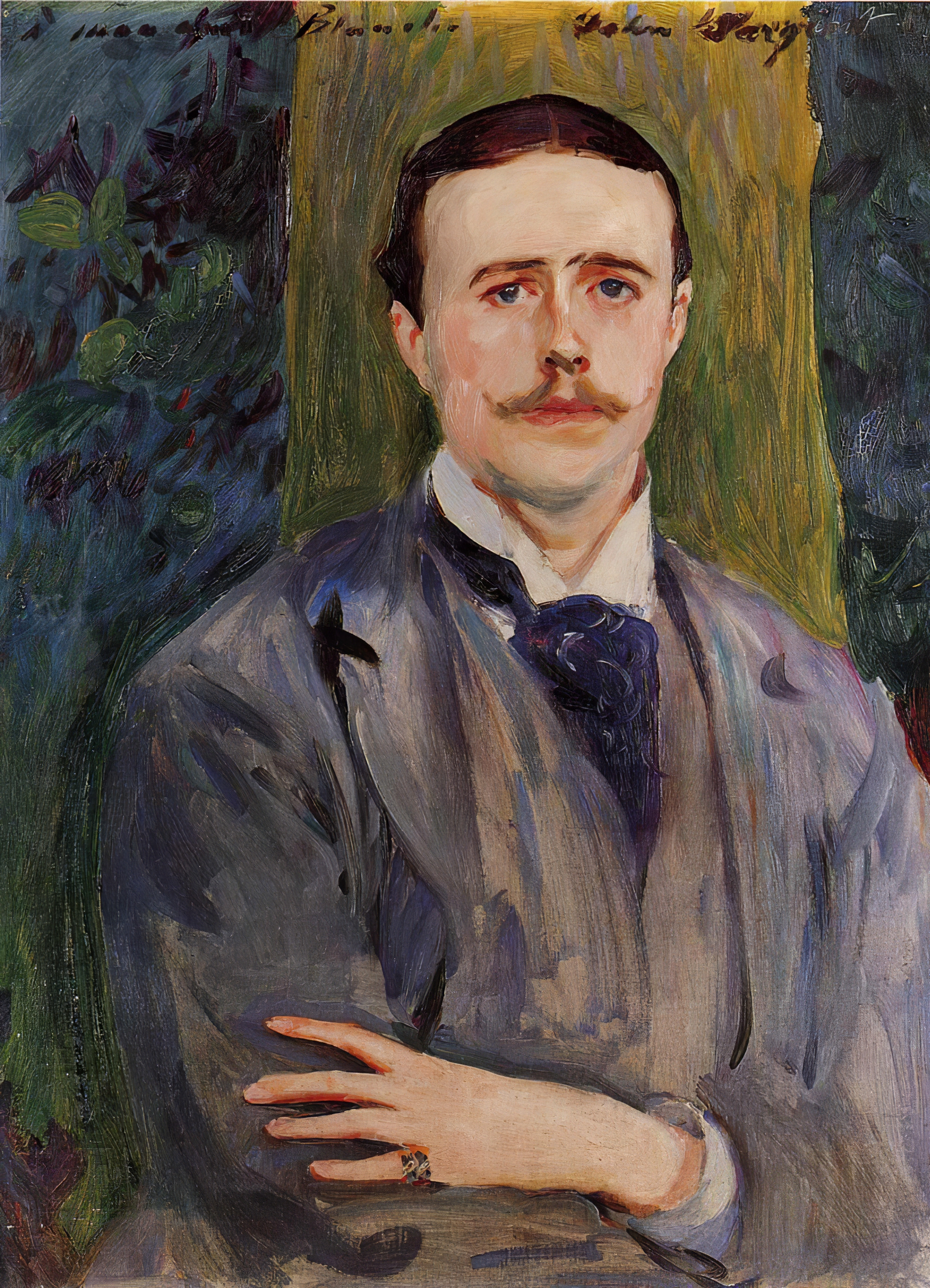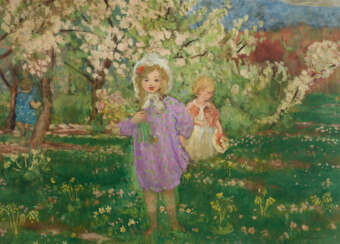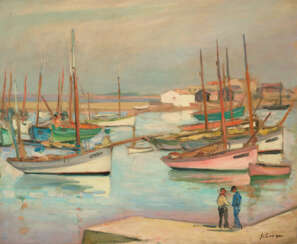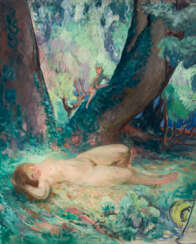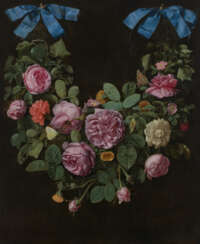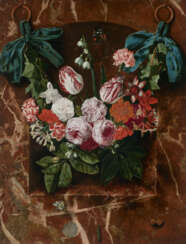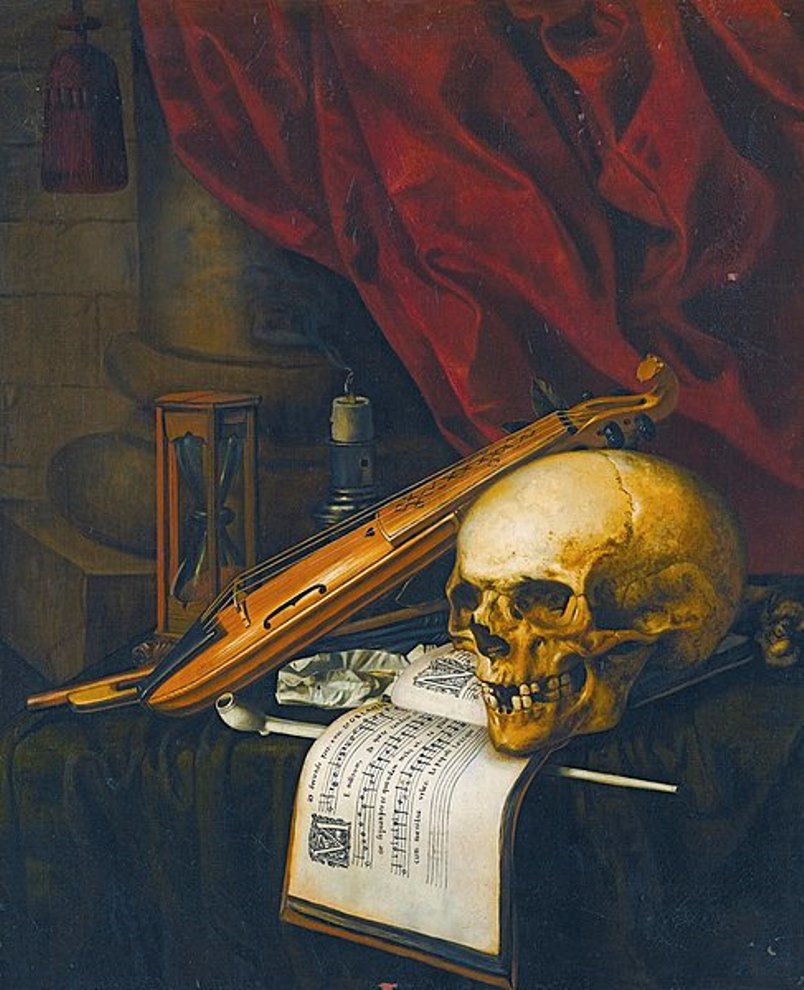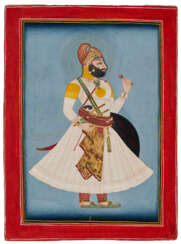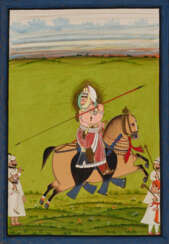
Paintings — The Collection of Ann & Gordon Getty: Wheatland
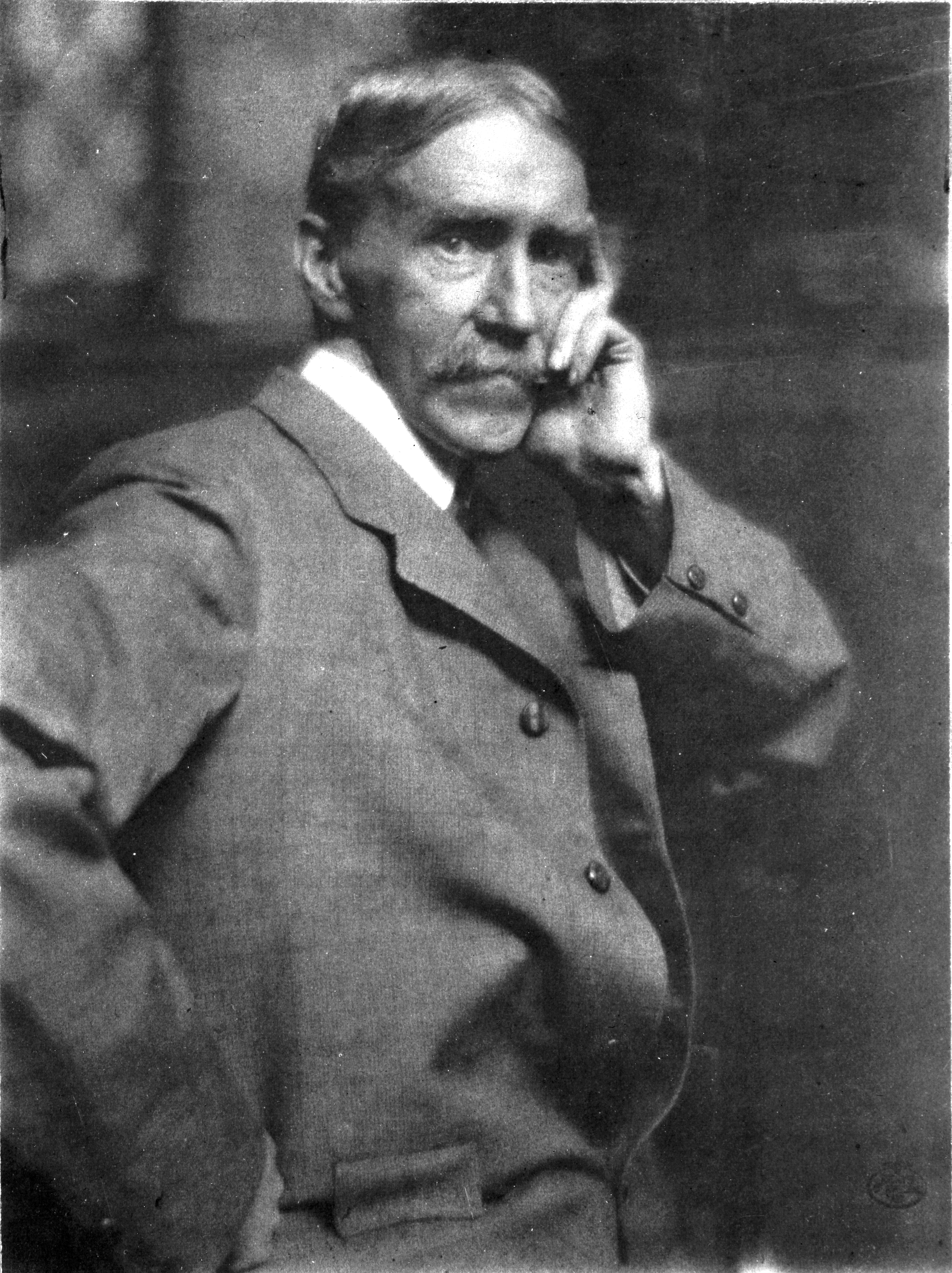
Maurice Brazil Prendergast was an American post-Impressionist painter known for the vibrant and saturated colors he used in his work, mostly in the genre of landscape and urban life. In 1886 Prendergast moved to Paris, where he studied at the École Julien under the tutelage of the masters of Impressionism, including Paul Cézanne, who had a great influence on Prendergast's style.
After his return to the United States in 1891, Prendergast became a popularizer of Impressionism in the United States. His work became brighter and more saturated in color than other American artists of the time, and he began to use a dotted style similar to the technique of divisionism. His paintings became similar to tapestries or mosaics.
Prendergast became a member of a group of artists known as the Founders of American Art, who advocated the use of bright and saturated colors instead of the muted and earthy tones adopted in traditional American art. Prendergast left behind a legacy that laid the foundation for the development of Post-Impressionism and Modernism in American art.
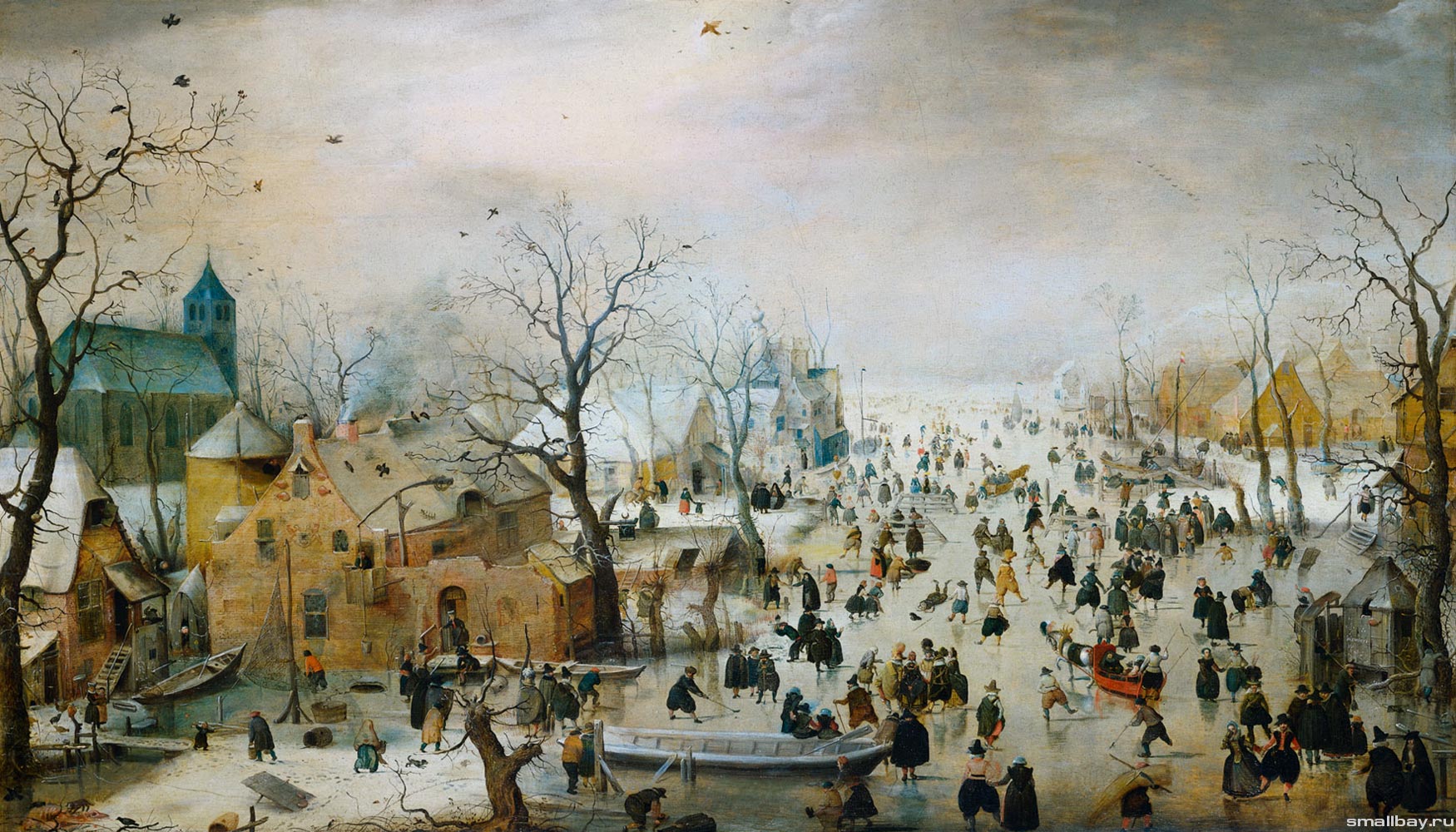
Hendrick Avercamp was a seminal Dutch painter during the Dutch Golden Age. He is celebrated as one of the earliest landscape painters of the 17th-century Dutch school, specializing in vibrant winter scenes of the Netherlands. His paintings are filled with colorful and lively depictions of people engaging in various activities against the backdrop of the Dutch winter landscape.
Educated by the Danish-born portrait painter Pieter Isaacsz, Hendrick Avercamp's work reflects a strong influence from the Flemish painting tradition, especially evident in the landscapes reminiscent of Pieter Bruegel the Elder. His technique of aerial perspective, where objects in the foreground are painted with richer colors than those in the distance, creates a remarkable impression of depth in his paintings.
Hendrick Avercamp's most ambitious and acclaimed work, 'Winter Landscape with Ice Skaters', painted around 1608, is a detailed panorama of human and animal activities during a harsh winter. This painting, along with others like 'Winter Landscape with a Frozen River and Figures' and 'Winter Landscape with Skates and People Playing Golf', showcase his knack for narrative, capturing various facets of 17th-century Dutch society enjoying the winter season.
Despite being mute and probably deaf, Hendrick Avercamp's keen observation skills are evident in his works, where he intricately portrays diverse classes engaging in various winter activities. He produced about a hundred paintings, many of which can be seen in the Rijksmuseum in Amsterdam and the Mauritshuis in The Hague. His work was also celebrated for its historical quality, providing a glimpse into the life of different societal levels in the Netherlands at that time.
For collectors and enthusiasts of art and antiques, Hendrick Avercamp's paintings offer a fascinating window into the Dutch Golden Age, with their vivid portrayal of life and activities in a winter setting. His works, characterized by meticulous detail and a cheerful narrative, remain an integral part of the conversation in the history of Dutch art.
To stay updated on the latest insights and collections related to Hendrick Avercamp's works, consider subscribing to our updates. Stay informed about new sales, exhibitions, and auction events featuring this master of Dutch winter landscapes.
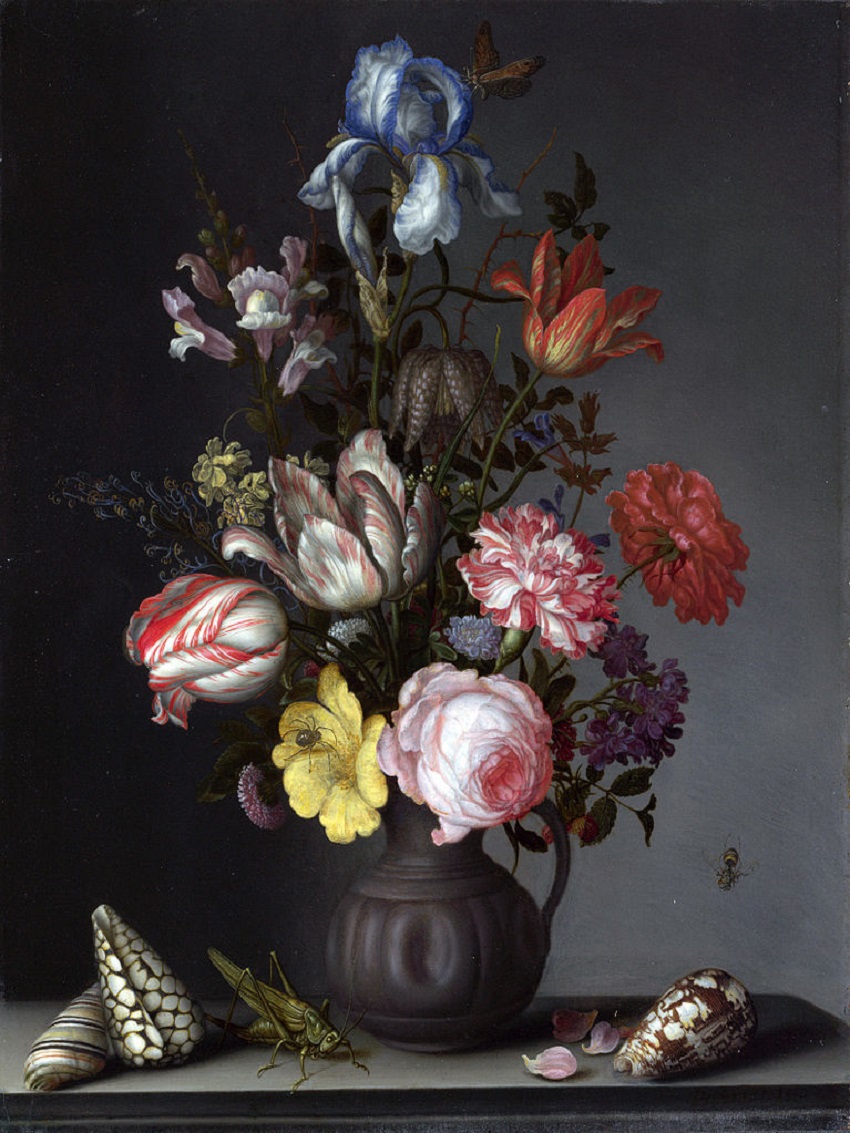
Balthasar van der Ast was a Dutch Golden Age painter who specialized in still lifes of flowers and fruit, as well as painting a number of remarkable shell still lifes; he is considered to be a pioneer in the genre of shell painting. His still lifes often contain insects and lizards.
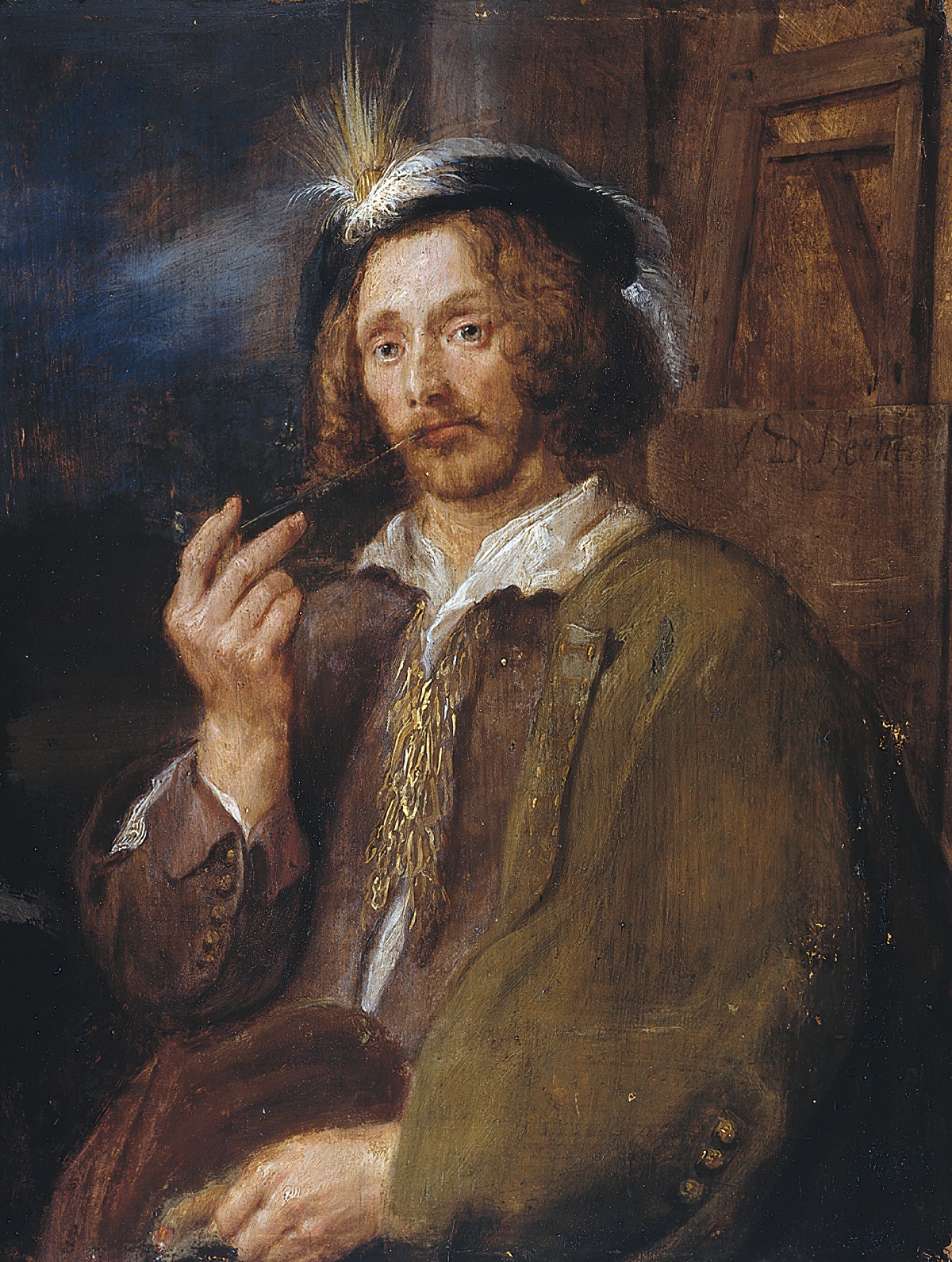
Jan Davidsz. de Heem was a still life painter who was active in Utrecht and Antwerp. He is a major representative of that genre in both Dutch and Flemish Baroque painting.
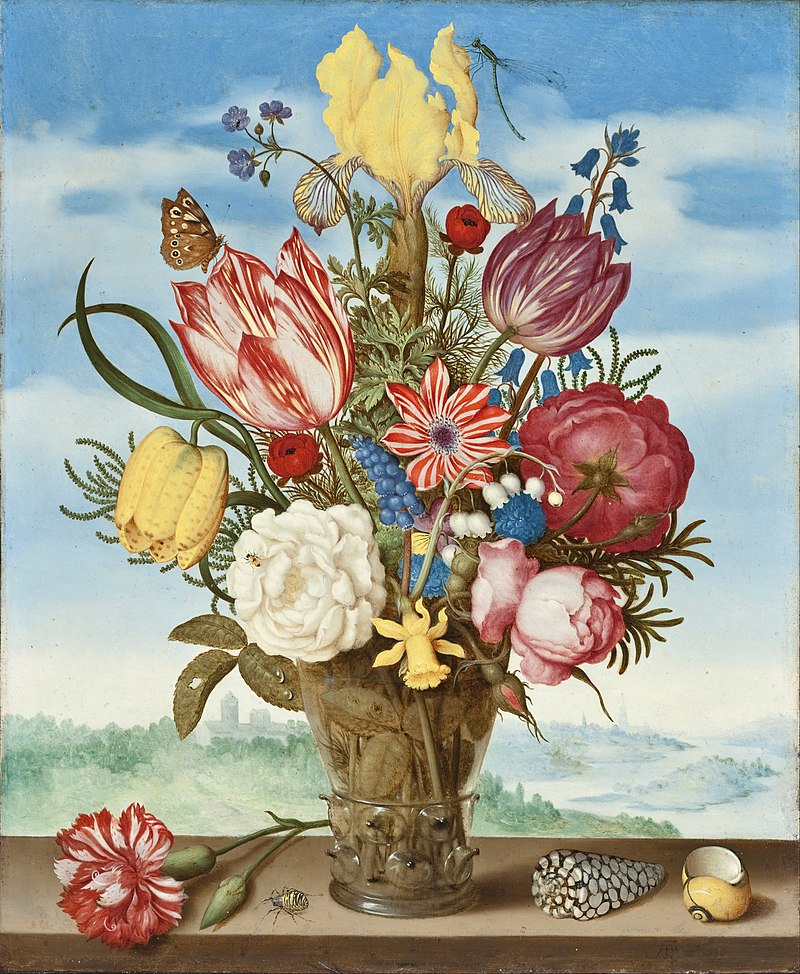
Ambrosius Bosschaert the Elder, born on January 18, 1573, in Antwerp and passing away in 1621 in The Hague, was a pivotal figure in the Dutch Golden Age of painting. Recognized for his remarkable contributions to the art of still life painting, particularly floral arrangements, Bosschaert founded a dynasty of painters who furthered his intricate style of floral and fruit painting. This legacy cemented Middelburg's status as a premier center for flower painting in the Dutch Republic.
Fleeing to the Northern Netherlands due to religious persecution, Bosschaert and his family settled in Middelburg around 1587, where he would spend the majority of his career. His paintings, known for their precision and vibrant composition, reflect the era's fascination with botany, merging scientific accuracy with artistic beauty. Bosschaert's work was not only celebrated for its aesthetic appeal but also for its symbolic and sometimes religious meanings, often painted on small copper canvases that highlighted the meticulous detail of each flower.
His influence and techniques were continued by his three sons and his brother-in-law, Balthasar van der Ast, ensuring the Bosschaert style flourished through the mid-17th century. Bosschaert's approach to flower painting laid the groundwork for what would become a defining genre in Dutch art, showcasing not just the beauty of nature but the wealth and intellectual curiosity of the era.
For collectors and experts in art and antiques, Ambrosius Bosschaert the Elder's contributions to still life and flower painting remain invaluable. His legacy is preserved in the meticulous bouquets that capture the transient beauty of flora, making his works sought after for both their historical significance and timeless appeal.
To stay informed about new discoveries, sales, and auction events related to Ambrosius Bosschaert the Elder, signing up for updates from art galleries and auction houses is recommended. This ensures access to the latest information and opportunities to acquire works by this master of still life painting.

Balthasar van der Ast was a Dutch Golden Age painter who specialized in still lifes of flowers and fruit, as well as painting a number of remarkable shell still lifes; he is considered to be a pioneer in the genre of shell painting. His still lifes often contain insects and lizards.
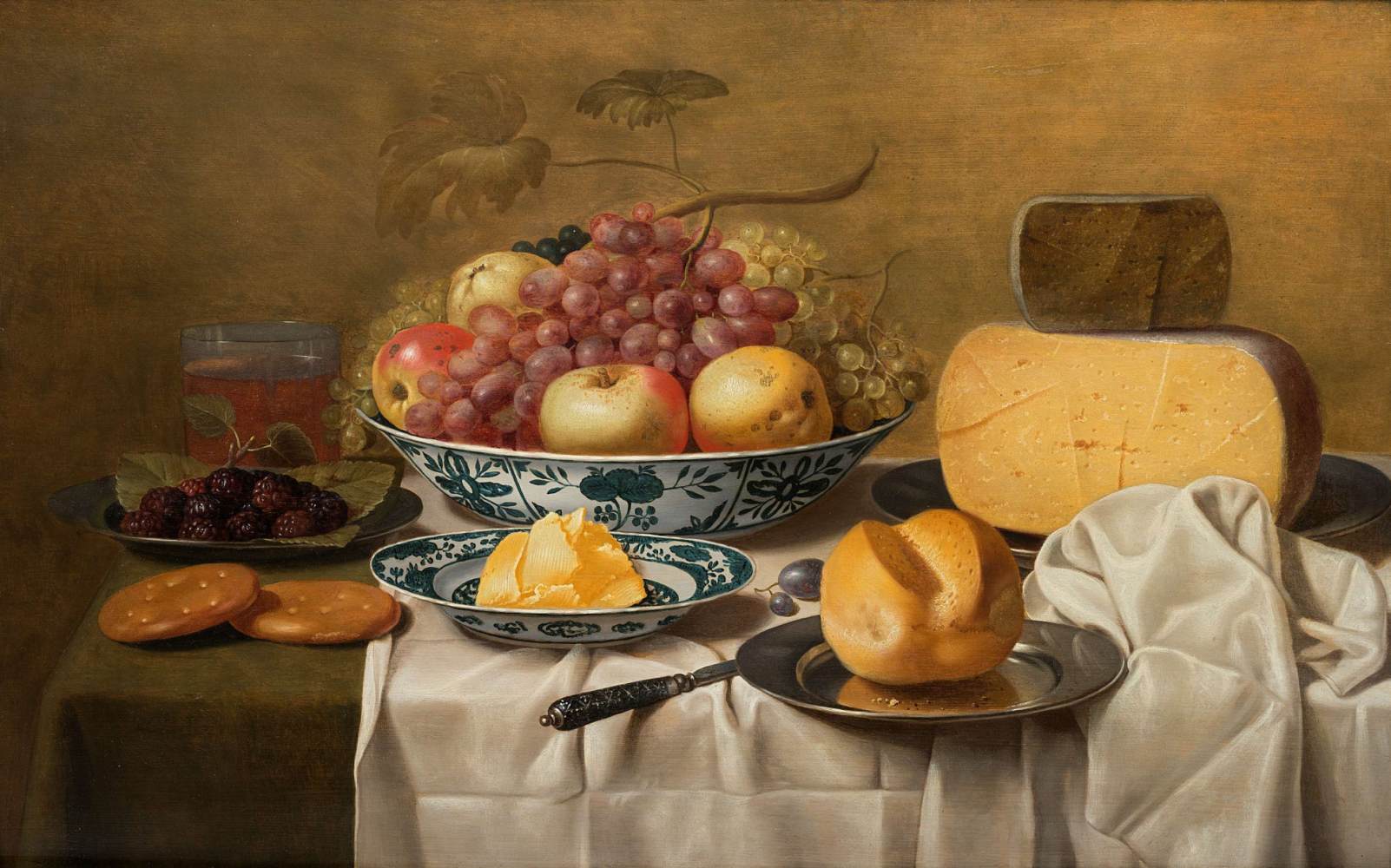
Floris Gerritsz van Schooten or Floris van Schooten was a Dutch painter who practised in a broad range of still life genres including breakfast pieces, fruit pieces, market scenes and large kitchen pieces.
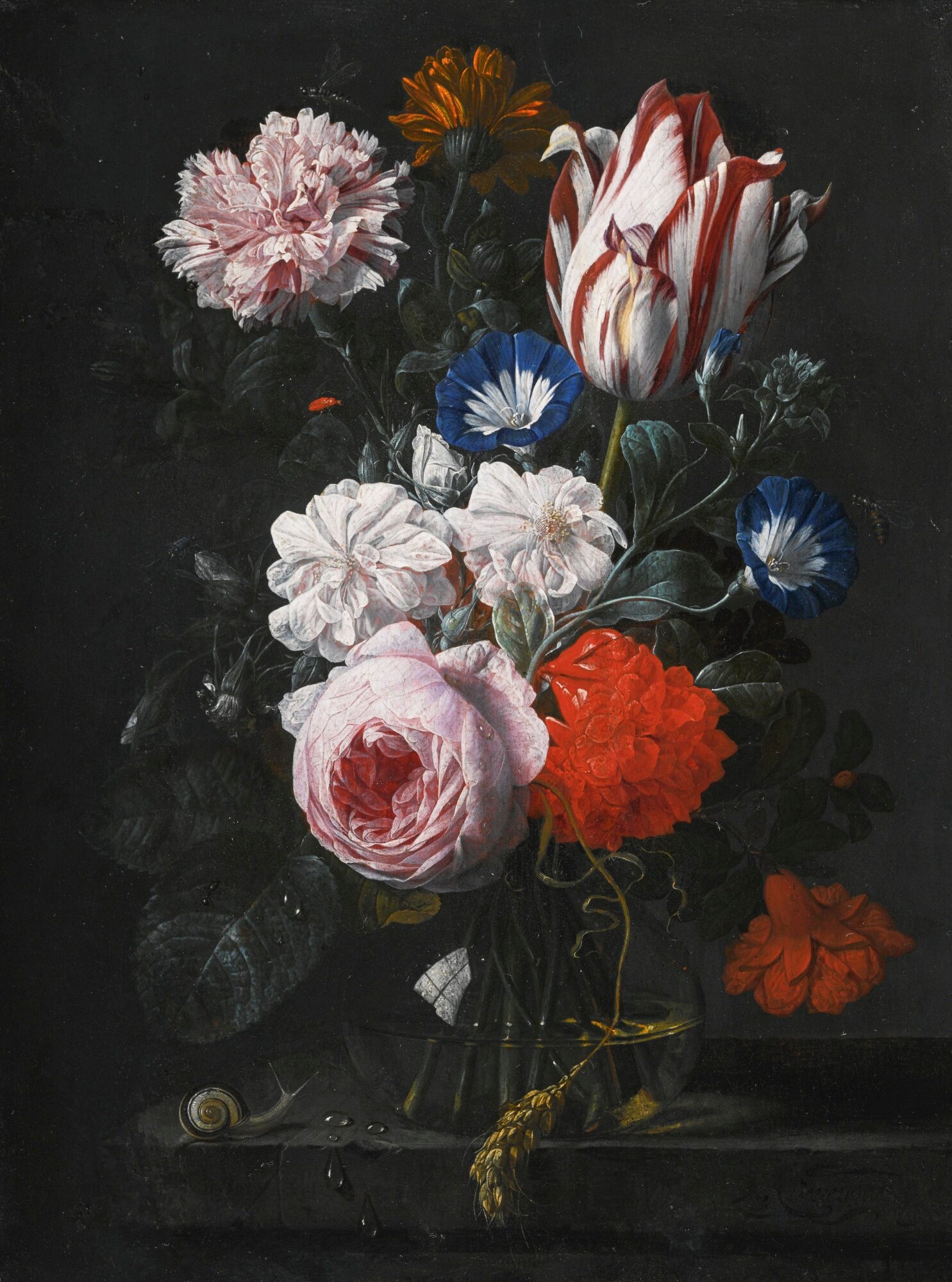
Nicolaes van Verendael or Nicolaes van Veerendael was a Flemish painter active in Antwerp who is mainly known for his flower paintings and vanitas still lifes. He was a frequent collaborator of other Antwerp artists to whose compositions he added the still life elements. He also painted a number of singeries, i.e, scenes with monkeys dressed and acting as humans.

Maurice Brazil Prendergast was an American post-Impressionist painter known for the vibrant and saturated colors he used in his work, mostly in the genre of landscape and urban life. In 1886 Prendergast moved to Paris, where he studied at the École Julien under the tutelage of the masters of Impressionism, including Paul Cézanne, who had a great influence on Prendergast's style.
After his return to the United States in 1891, Prendergast became a popularizer of Impressionism in the United States. His work became brighter and more saturated in color than other American artists of the time, and he began to use a dotted style similar to the technique of divisionism. His paintings became similar to tapestries or mosaics.
Prendergast became a member of a group of artists known as the Founders of American Art, who advocated the use of bright and saturated colors instead of the muted and earthy tones adopted in traditional American art. Prendergast left behind a legacy that laid the foundation for the development of Post-Impressionism and Modernism in American art.
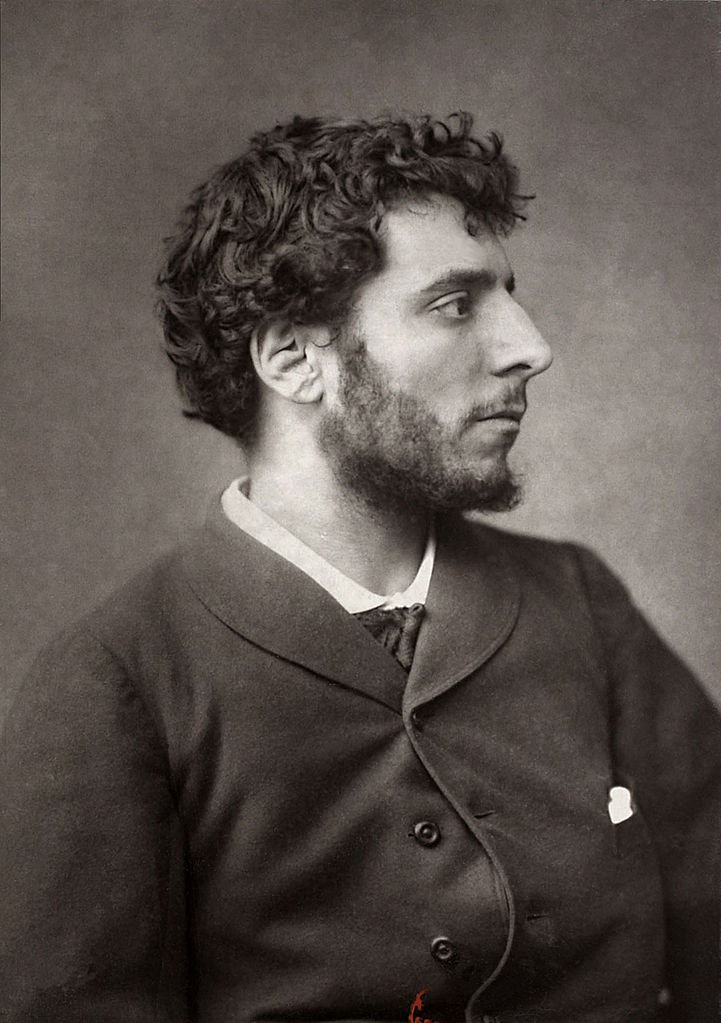
Henri-Jean Guillaume Martin was a French painter. Elected to the Académie des Beaux-Arts in 1917, he is known for his early 1920s work on the walls of the Salle de l'Assemblée générale, where the members of the Conseil d'État meet in the Palais-Royal in Paris. Other notable institutions that have featured his Post-Impressionist paintings in their halls through public procurement include the Élysée Palace, Sorbonne, Hôtel de Ville de Paris, Palais de Justice de Paris, as well as Capitole de Toulouse, although the Musée des Beaux-Arts de Bordeaux and Musée des Augustins also have sizeable public collections.
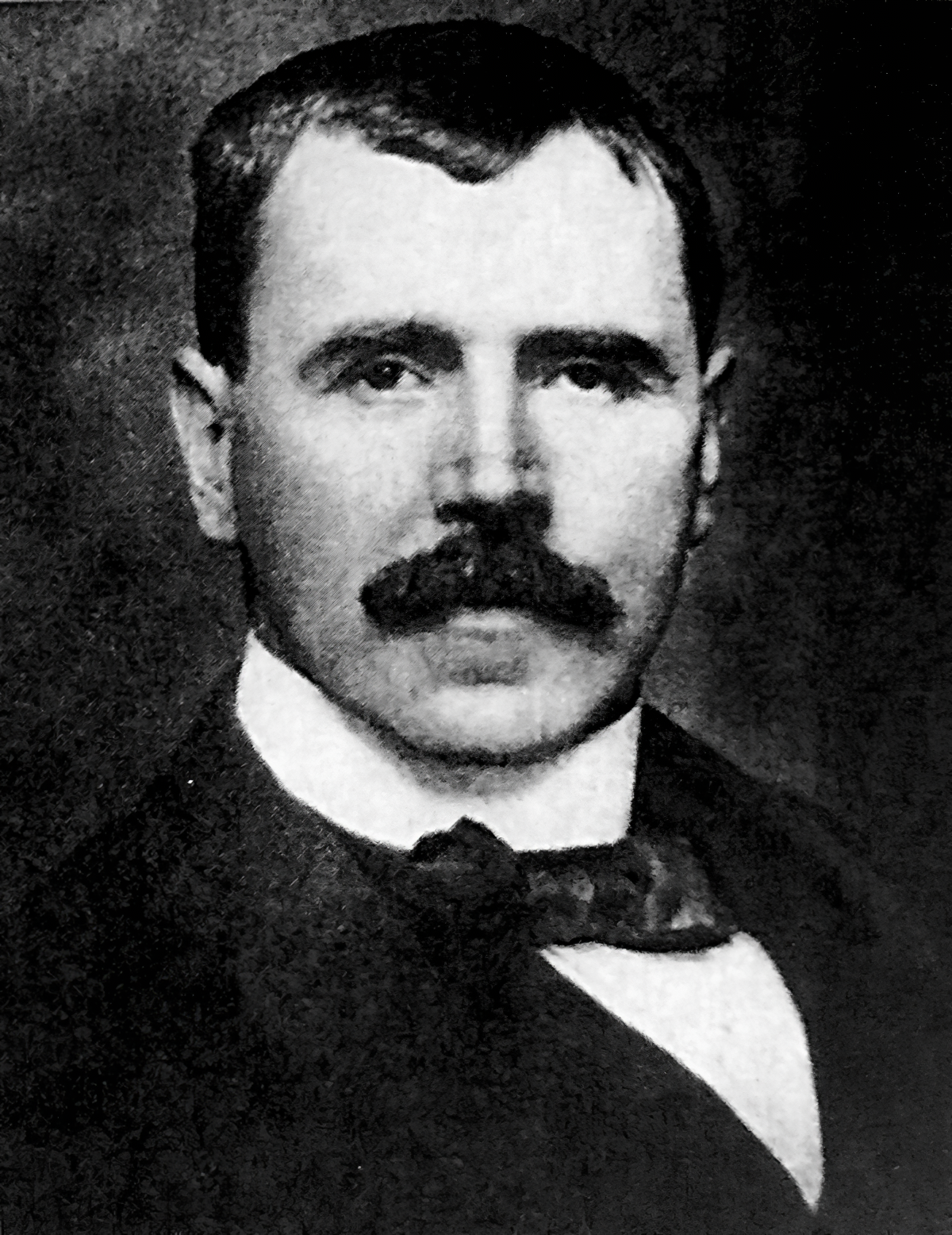
John Lavery was an Irish artist, renowned for his portraits and wartime depictions, hailing from the influential Glasgow School. Born on March 20, 1856, Lavery's artistry was a blend of the Ulster, Irish, and British Schools, celebrated for breathing life into sketches and creating atmospheric depth with each brushstroke.
His technique, leaving each touch of the brush visible, added a vibrant quality to his works, making him a standout artist of his time. Lavery's education and practice in Glasgow, London, and Paris at the Académie Julian honed his skill, leading to a mastery of landscapes and everyday scenes that carried the subtle influence of French painters.
Lavery's legacy endures in galleries and collections, where his magic touch with landscapes and portraiture continues to inspire awe. Collectors and aficionados of fine art regard Lavery's works as a significant part of Irish and Scottish art heritage. His pieces are not only visually stunning but also historically important, encapsulating the spirit of an era that bridged traditional and modern art forms.
For those who appreciate the allure of landscapes and the intimacy of portraiture, John Lavery's works are a must-have. Signing up for updates from galleries and auctions that feature his work is essential for any serious collector or expert in art and antiques, ensuring you don't miss the opportunity to own a piece by this master of the canvas.
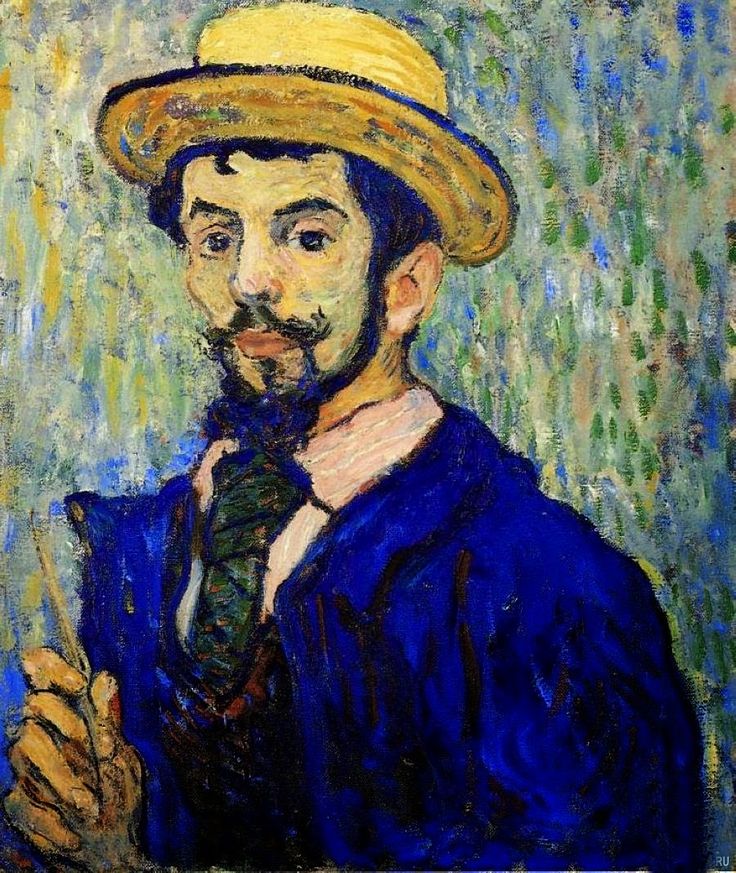
Louis Valtat was a French painter and printmaker associated with the Fauves ("the wild beasts", so named for their wild use of color), who first exhibited together in 1905 at the Salon d'Automne. He is noted as a key figure in the stylistic transition in painting from Monet to Matisse.
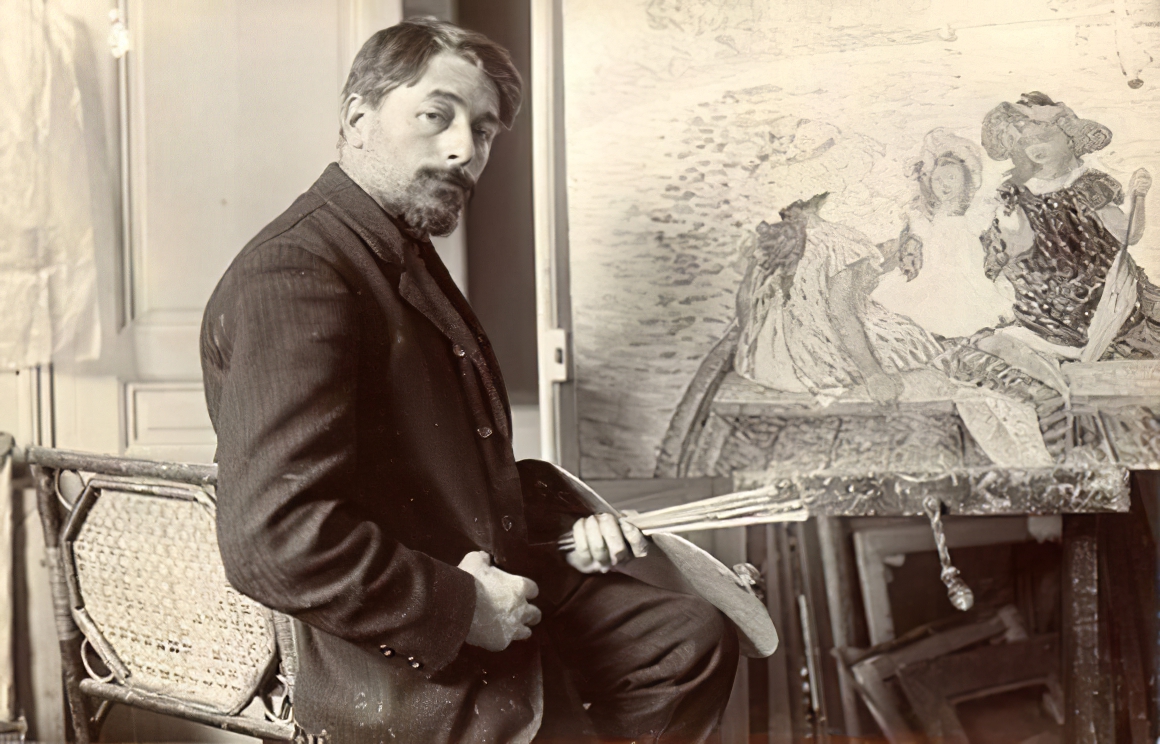
Henri Lebasque was a renowned French post-impressionist painter, celebrated for his vibrant use of color and light, earning him the nickname "the painter of joy and light." Henri Lebasque's artistic journey began at the École régionale des beaux-arts d'Angers, eventually leading him to Paris to study under Léon Bonnat. His interactions with prominent artists like Camille Pissarro, Auguste Renoir, Édouard Vuillard, and Pierre Bonnard deeply influenced his style, particularly his understanding of color theory from Georges Seurat and Paul Signac.
Henri Lebasque was a pivotal figure in the Salon d'Automne, co-founding it in 1903 alongside Henri Matisse. His art evolved significantly after moving to the South of France, where the luminous landscape inspired a transformation in his color palette. His works, which include landscapes, nudes, and domestic scenes, are distinguished by their light-filled and tender representations, capturing the essence of his surroundings.
Henri Lebasque's paintings are held in prestigious museums such as the Musée d'Orsay in Paris and the Museum of Fine Arts of Nancy. His piece "Sous la lampe" from 1904 is an example of his work featured in a museum collection.
For those intrigued by Henri Lebasque's art and wishing to explore more about his contributions to post-impressionism, consider signing up for updates. This subscription will keep you informed about new product sales and auction events related to Lebasque's works, ensuring you stay connected to the vibrant world of art and antiques.

Henri Lebasque was a renowned French post-impressionist painter, celebrated for his vibrant use of color and light, earning him the nickname "the painter of joy and light." Henri Lebasque's artistic journey began at the École régionale des beaux-arts d'Angers, eventually leading him to Paris to study under Léon Bonnat. His interactions with prominent artists like Camille Pissarro, Auguste Renoir, Édouard Vuillard, and Pierre Bonnard deeply influenced his style, particularly his understanding of color theory from Georges Seurat and Paul Signac.
Henri Lebasque was a pivotal figure in the Salon d'Automne, co-founding it in 1903 alongside Henri Matisse. His art evolved significantly after moving to the South of France, where the luminous landscape inspired a transformation in his color palette. His works, which include landscapes, nudes, and domestic scenes, are distinguished by their light-filled and tender representations, capturing the essence of his surroundings.
Henri Lebasque's paintings are held in prestigious museums such as the Musée d'Orsay in Paris and the Museum of Fine Arts of Nancy. His piece "Sous la lampe" from 1904 is an example of his work featured in a museum collection.
For those intrigued by Henri Lebasque's art and wishing to explore more about his contributions to post-impressionism, consider signing up for updates. This subscription will keep you informed about new product sales and auction events related to Lebasque's works, ensuring you stay connected to the vibrant world of art and antiques.

Henri Lebasque was a renowned French post-impressionist painter, celebrated for his vibrant use of color and light, earning him the nickname "the painter of joy and light." Henri Lebasque's artistic journey began at the École régionale des beaux-arts d'Angers, eventually leading him to Paris to study under Léon Bonnat. His interactions with prominent artists like Camille Pissarro, Auguste Renoir, Édouard Vuillard, and Pierre Bonnard deeply influenced his style, particularly his understanding of color theory from Georges Seurat and Paul Signac.
Henri Lebasque was a pivotal figure in the Salon d'Automne, co-founding it in 1903 alongside Henri Matisse. His art evolved significantly after moving to the South of France, where the luminous landscape inspired a transformation in his color palette. His works, which include landscapes, nudes, and domestic scenes, are distinguished by their light-filled and tender representations, capturing the essence of his surroundings.
Henri Lebasque's paintings are held in prestigious museums such as the Musée d'Orsay in Paris and the Museum of Fine Arts of Nancy. His piece "Sous la lampe" from 1904 is an example of his work featured in a museum collection.
For those intrigued by Henri Lebasque's art and wishing to explore more about his contributions to post-impressionism, consider signing up for updates. This subscription will keep you informed about new product sales and auction events related to Lebasque's works, ensuring you stay connected to the vibrant world of art and antiques.
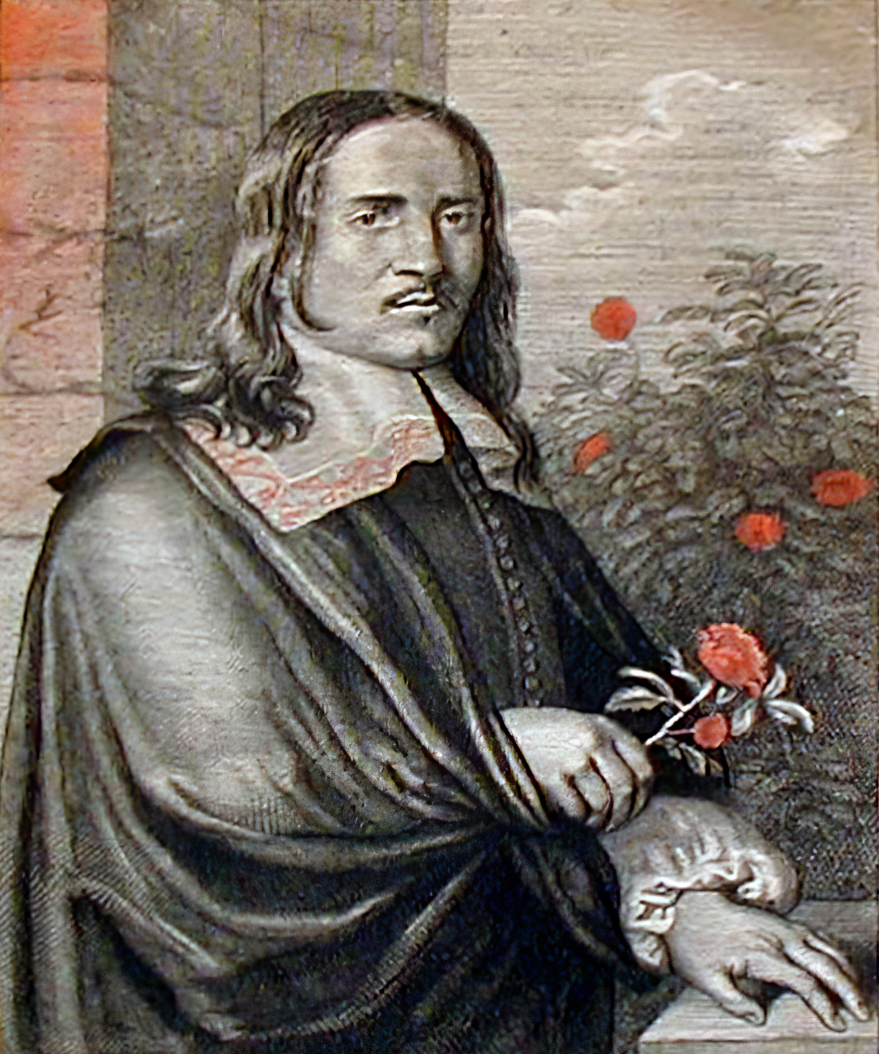
Jan van Kessel the Elder or Jan van Kessel I was a Flemish painter active in Antwerp in the mid 17th century. A versatile artist he practised in many genres including studies of insects, floral still lifes, marines, river landscapes, paradise landscapes, allegorical compositions, scenes with animals and genre scenes. A scion of the Brueghel family many of his subjects took inspiration of the work of his grandfather Jan Brueghel the Elder as well as from the earlier generation of Flemish painters such as Daniel Seghers, Joris Hoefnagel and Frans Snyders. Van Kessel’s works were highly prized by his contemporaries and were collected by skilled artisans, wealthy merchants, nobles and foreign luminaries throughout Europe.
